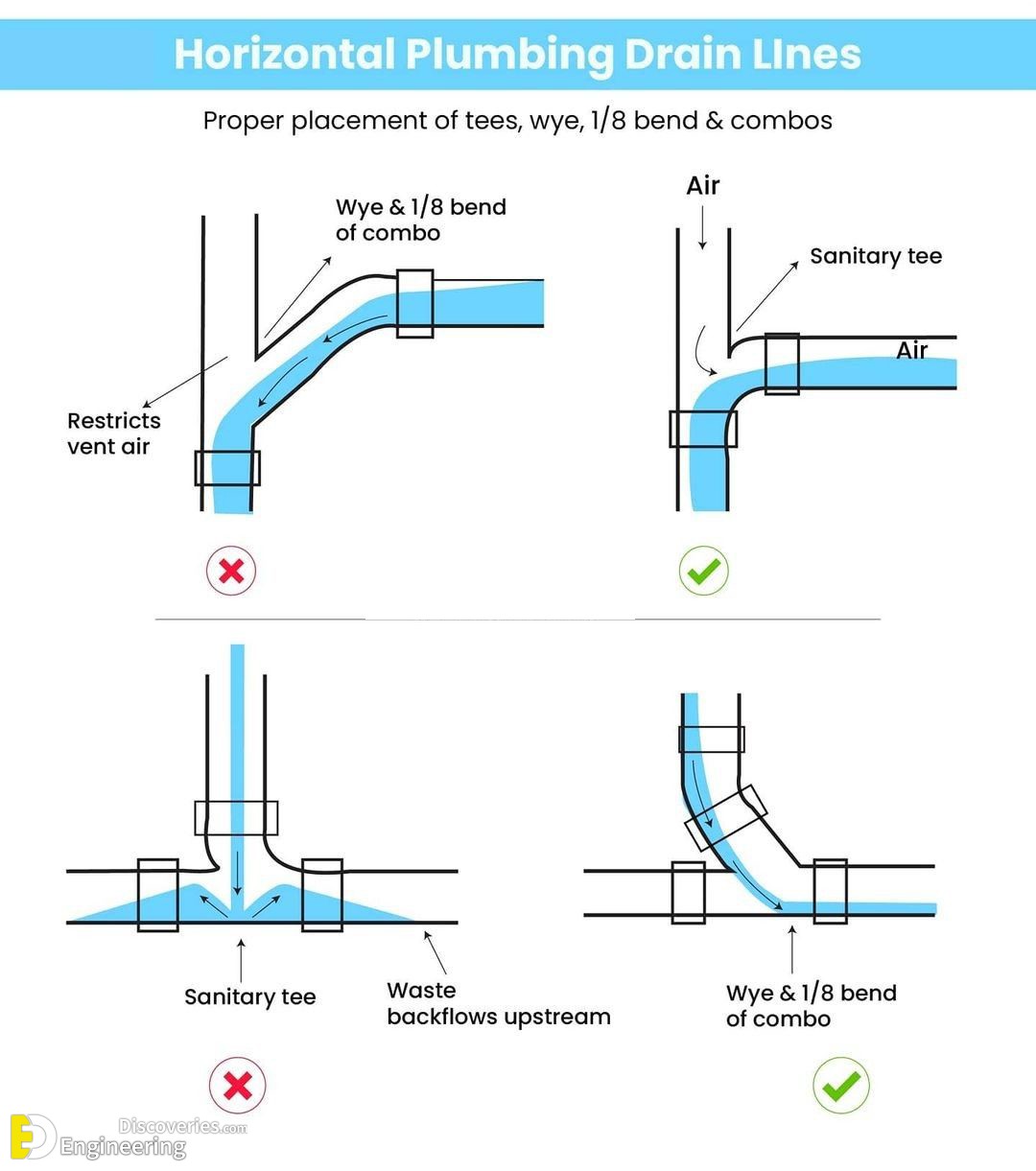Water is the essence of life. Civilizations have grown where water was available like on the bank of the river. Water is necessary to carry out various household activities in day-to-day life. Hence, water service (i.e. water supply and drainage) has become integral to any house construction. The provision of water services in a house is known as a residential plumbing system. It is complicated and one of the costliest systems to install and repair. This article briefs about house plumbing systems, which will greatly help understand their design, purpose, working, and maintenance.
The residential plumbing system is a complex network comprised of hot & cold water supply pipes, fixtures, and appliances, drain pipes, traps, vent pipes, water storage tanks, etc. It runs either unseen inside the walls or on the walls.
Objectives of a Good Plumbing System are:
- Supplying safe drinking water (potable water) in adequate quantities at the right pressure and quantity.
- Check on leakages to minimize wastage of water or say zero leakage.
- In no case, potable water should get mixed with wastewater.
- Collecting and disposing of wastewater from the house efficiently.
- Preventing the entry of foul gases into the home and allowing its easy escape.
- The drain pipe from the house should have access towards sewer lines or septic tanks with a downward slope, a minimum of a 1/4th inch per foot slope, i.e. 20mm per 1m, and a maximum of 3 inches per foot, i.e. 80mm per 1m.
- Provision of manholes for cleaning drain pipes.
- Plumbing appliances, materials, and workmanship should conform to quality standards.
Three Essential Parts of the Residential Plumbing System are:
- Water Supply System (flow of water into a house)
- Fixtures and Appliances (where water is used for carrying out various activities)
- Drainage system (collection and disposal of used (waste) water)
Red signifies the hot water supply
Green signifies the drain system
Yellow signifies vent (air) system
Working on Residential Plumbing System
A. Water Supply System
01. Potable water is supplied by the municipality or private water company or through a private underground bore well.
02. This water enters a house through the main supply line. The water supply in a house is either of direct water supply system or an indirect water supply system. The design of the water supply system network will depend on whether the supply is 24 x 7 or intermittent.
- Direct Water Supply System: All water outlets of a house receive water directly from the mains. Potable water is available at all faucets. This is possible where the water source delivers water 24 x 7 with high water pressure, sufficient enough to deliver water at an adequate pressure at all faucets (taps).
- Indirect Water Supply System: Water from mains is conveyed to storage water tanks. Water is then delivered to the house from the water storage tank. This system is adopted where water supply from mains is not available throughout the day. It is also used when water pressure in the mains is not sufficient enough to deliver water at all faucets with adequate pressure.
03. Main supply line (down take pipe in case of Indirect water supply system) then splits into two branch lines. One branch line takes water to the water heater and the other branch line carries cold water.
04. From the water heater, the hot water line runs parallel to the cold water line. Both lines bring water to fixtures and appliances throughout the house.
05. Thus, it is basically a network of pipes for the distribution and delivery of water.
06. Underground and overhead tanks and pumping of water also needs careful consideration.
07. Sometimes booster pumps are also installed so as to deliver water at uniform and adequate pressure.
B. Fixtures and Appliances
01. Various sanitary fixtures and appliances are provided in-house.
- Fixtures: sinks, bathtubs, showers, and laundry tubs (toilets and exterior sillcocks (bibs) require only a cold water line)
- Appliances: water heaters, dishwashers, washing machine, water softeners
02. All fixtures and appliances require water at distinct water pressure and water flow. Pressure at fixtures and appliances should not be less than 1.2kg/cm² (12m head) and not greater than 5kg/cm² (50m head). Care should be taken while fixing the height of fixtures so that adequate water pressure is available.
03. Water outlet at fixtures and appliances is controlled by faucets (taps) and valves.
04. Nowadays sophisticated faucets are available needing basic minimum pressure and for which sound hydraulic design is a must.
C. Drainage or Waste Water Disposal
01. The used water then enters the drainage system (wastewater system).
02. Before entering drainage pipes, used water is first passed through drain traps.
- Trap: It is a U-shaped pipe. It holds standing water and prevents foul sewer gases from entering and spreading into room space.
03. Drainage system works entirely on gravity. All the wastewater flows downward through a series of large-diameter pipes.
04. The drainage pipes are attached to a system of vent pipes.
- Vent pipe: Vent pipes are open from the top end, from where they bring fresh air to the drain system, forcing drainage water to flow downward. These pipes exit the house at the rooftop.
05. All wastewater eventually reaches the main wastewater line, which exits the house and is connected to either the municipal sewer line or connected to the septic tank and cesspit where the sewer line is not available.
In the case of a drainage system, the inverted levels of inspection chambers or manholes on road are very important for gravity flow. Apart from the above rainwater drainage and fire protection, systems also form part of modern houses.
Click Here To See Worst Plumbing Construction Mistakes The World Has Ever Seen





